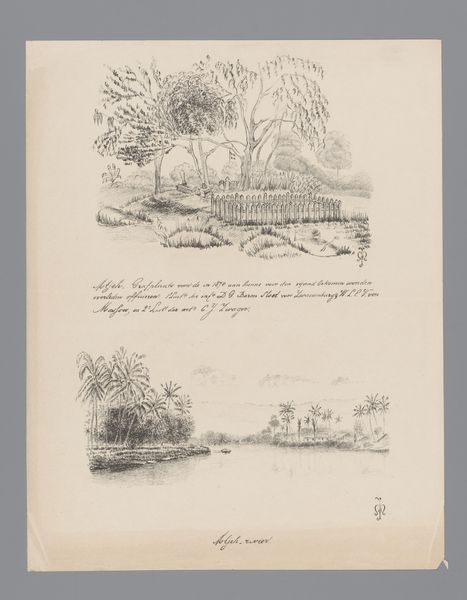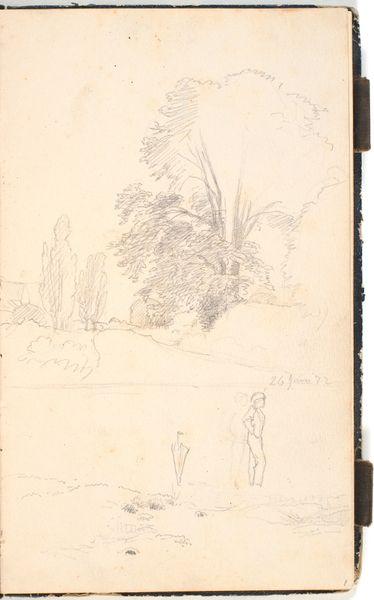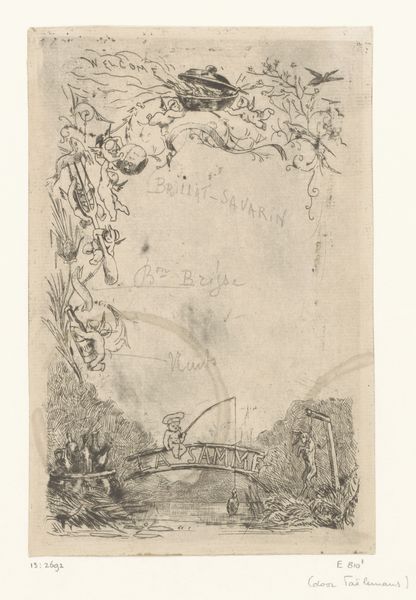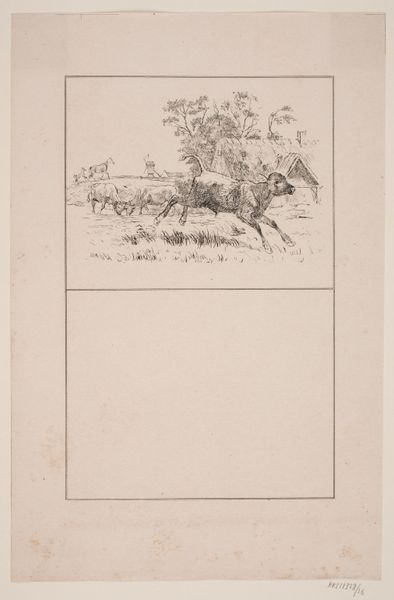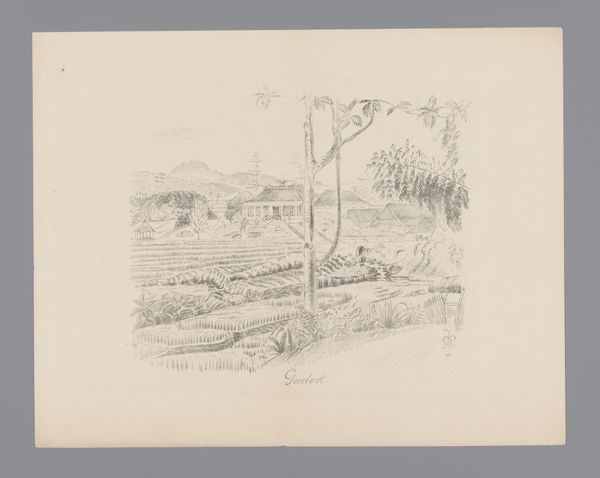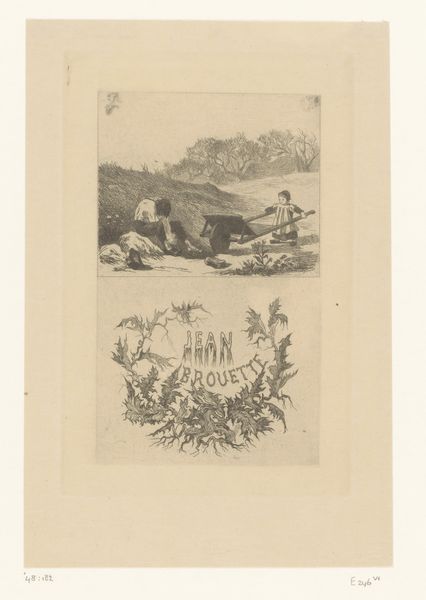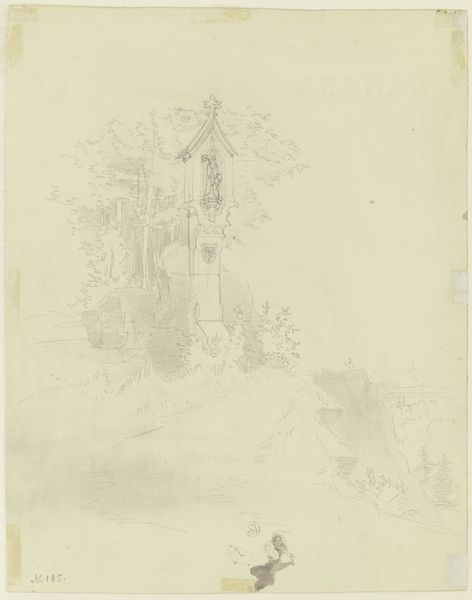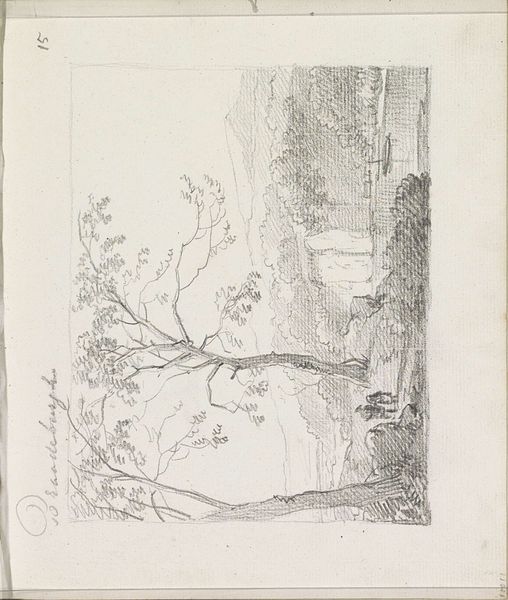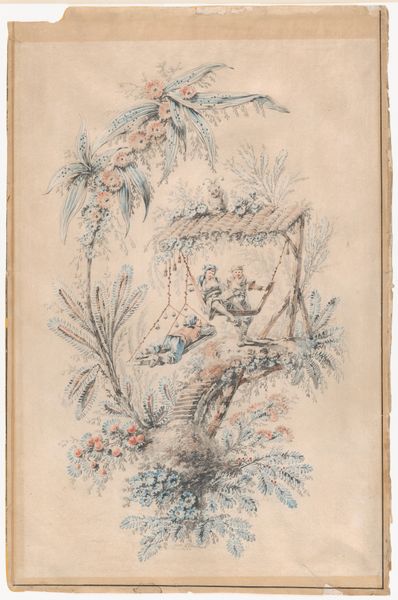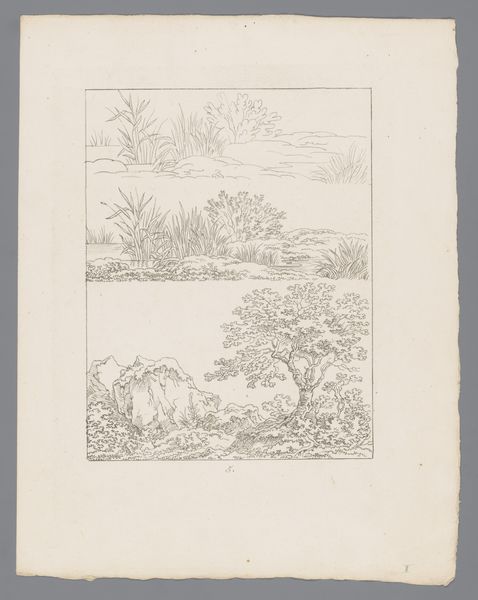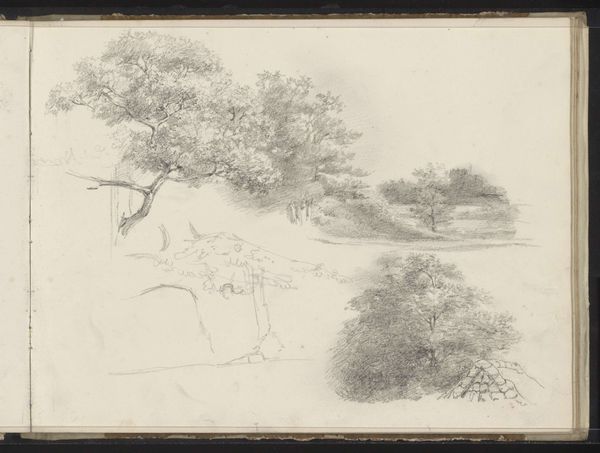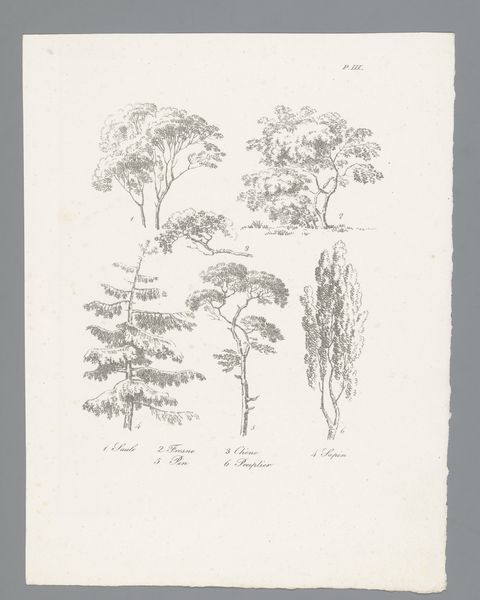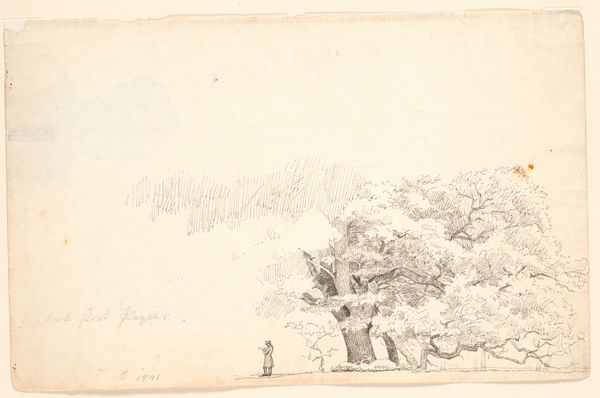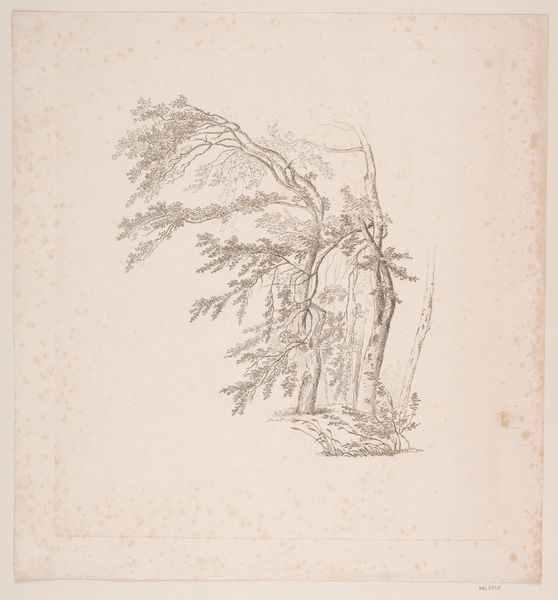
drawing, painting, plein-air, watercolor, ink
#
drawing
#
water colours
#
narrative-art
#
painting
#
plein-air
#
landscape
#
figuration
#
watercolor
#
ink
#
romanticism
#
genre-painting
Copyright: Public Domain
Editor: This piece, "Hunting" by Eugen Klimsch, seems to be rendered in watercolor and ink. I'm struck by how it blends text, natural elements like the wheat stalks, and the hunting scene. What do you see as the most significant aspects of this piece? Curator: I see a fascinating exploration of material relationships and the social context surrounding artistic production. Notice how Klimsch combines seemingly disparate elements: the delicate rendering of flora with text and a hunting scene. What materials are being prioritized here and why? Is it painting, the labor-intensive art of handwriting, or hunting itself? Editor: I hadn't thought of it that way, but the juxtaposition of elements does make you consider how value is being assigned. Is the hunting scene more or less valuable than the depiction of wheat stalks? Curator: Exactly. Consider also the materiality of the watercolor itself – how its fluidity allows for both detailed rendering and a certain ethereal quality. Watercolor painting, especially in "plein-air," had a specific role in documenting and romanticizing nature. And is nature purely nature here, or is the labor of man represented as well? Think about the consumption that hunting leads to. Editor: The landscape style links it to nature, but the context definitely challenges that view. Are you suggesting the artwork subtly hints at labor? Curator: Subtly and not so subtly. Hunting was not a universal pursuit. Consider the historical context of who would be engaging in such activities and how it might represent certain social strata versus others. Editor: So it’s not just about the beauty of the scene, but also the economic and social implications of the materials and activities represented? Curator: Precisely. It's about unpacking the means of production and consumption embedded within the artwork, challenging the separation of high art from the everyday. This piece shows us so many different material forms from wheat, paper, paint and handwritten text. The poem too is a material, don't you think? Editor: That’s really broadened my understanding of the piece. I was focused on the aesthetic elements, but now I see it as a commentary on the relationship between labor, nature, and social class through materiality. Thank you!
Comments
No comments
Be the first to comment and join the conversation on the ultimate creative platform.
